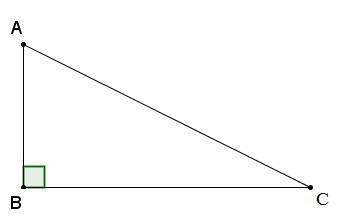Informations
Vous devez être inscrit pour accéder à ces informations.
Ceci vous permet de visualiser les ressources déjà vues et marquer à revoir celles qui nécessitent d'être retravaillées.
Contenu
Calculs du produit scalaire avec les différentes expressions
Calcul d’un angle dans un triangle
Propriétés algébriques du produit scalaire (développer) et carré scalaire
Ressources associées et exercices semblables
Interrogation utiliser les différentes expressions du produit scalaire (réf 0799)
devoir
Devoir produit scalaire: utiliser les différentes expressions (réf 0801)
devoir
Aide mémoire complet produit scalaire et vecteurs (réf 0806)
mémo
- $ABC$ est un triangle tel que $AB=6$cm, $AC=4$cm et $BC=7$cm.
Rappel cours
Produit scalaire avec les normes
Pour tous vecteurs $\overrightarrow{u}=\overrightarrow{AB}$ et $\overrightarrow{v}=\overrightarrow{AC}$ on a:
$\overrightarrow{u}.\overrightarrow{v}=\dfrac{\mid \mid \overrightarrow{u}\mid \mid^2+\mid \mid \overrightarrow{v}\mid \mid^2-\mid \mid \overrightarrow{u}-\overrightarrow{v}\mid \mid^2}{2}$
Dans le triangle $ABC$: $\overrightarrow{AB}.\overrightarrow{AC}=\dfrac{AB^2+AC^2-BC^2}{2}$Solution
Vous devez être abonné pour accéder à ce contenu...
Infos abonnements - $AB=6$cm, $AC=5$cm et $\widehat{BAC}=\dfrac{2\pi}{3}$ radians.
Rappel cours
Produit scalaire (définition)
$\overrightarrow{u}$ et $\overrightarrow{v}$ sont deux vecteurs non nuls tels que $\overrightarrow{u}=\overrightarrow{AB}$ et $\overrightarrow{v}=\overrightarrow{AC}$, le produit scalaire des deux vecteurs est noté $\overrightarrow{u}.\overrightarrow{v}$,et est le nombre réel défini par:
$\overrightarrow{u}.\overrightarrow{v}=\mid \mid \overrightarrow{u}\mid \mid\times \mid \mid \overrightarrow{v}\mid \mid \times cos(\widehat{BAC})=AB\times AC\times cos(\widehat{BAC})$Aide
Rappel $cos\left(\dfrac{2\pi}{3}\right)=\dfrac{-1}{2}$
Solution
Vous devez être abonné pour accéder à ce contenu...
Infos abonnements - $AB=6cm$

Rappel cours
Produit scalaire et projeté orthogonal
Soit $A$, $B$ et $C$ trois points ($A$ et $B$ distincts) et $\overrightarrow{u}=\overrightarrow{AB}$ et $\overrightarrow{v}=\overrightarrow{AC}$.
Si $H$ est le projeté orthogonal de $C$ sur $(AB)$:
$\overrightarrow{u}.\overrightarrow{v}=AB\times AH$ si $\widehat{BAH}=0$ (soit $\widehat{BAC}$ aigu)
et $\overrightarrow{u}.\overrightarrow{v}=-AB\times AH$ si $\widehat{BAH}=\pi$ (soit $\widehat{BAC}$ obtus)Aide
On peut utiliser le projeté orthogonal de $c$ sur $(AB)$
Solution
Vous devez être abonné pour accéder à ce contenu...
Infos abonnements - $AB=2AC=6$cm

Aide
$\widehat{BAC}=\pi$ radians
Solution
Vous devez être abonné pour accéder à ce contenu...
Infos abonnements
- Faire une figure.
Solution
Vous devez être abonné pour accéder à ce contenu...
Infos abonnements - Calculer $\overrightarrow{AB}.\overrightarrow{AC}$.
Rappel cours
Coordonnées d'un vecteur défini par deux points
Si $A(x_A;y_A)$ et $B(x_B;y_B)$ alors $\overrightarrow{AB}\begin{pmatrix }x_B-x_A\\y_B-y_A\end{pmatrix}$ (coordonnées du second point $-$ coordonnées du premier point)
Produit scalaire dans un repère orthonormé
Dans un repère orthonormé, si $\overrightarrow{u}\begin{pmatrix}x\\y\end{pmatrix}$ et $\overrightarrow{v}\begin{pmatrix}x'\\y'\end{pmatrix}$ on a:
$\overrightarrow{u}.\overrightarrow{v}=xx'+yy'$
Solution
Vous devez être abonné pour accéder à ce contenu...
Infos abonnements - Déterminer la mesure arrondie au dixième de degré de l'angle $\widehat{BAC}$.
Rappel cours
Distance dans un repère
Dans un repère orthonormé du plan, on a $A(x_A;y_A)$ et $B(x_B;y_B)$,
$AB=\sqrt{(x_B-x_A)^2+(y_B-y_A)^2}$
Si $\overrightarrow{u}\begin{pmatrix}x\\y\end{pmatrix}$ alors $||\overrightarrow{u}||=\sqrt{x^2+y^2}$Aide
On a $\overrightarrow{AB}.\overrightarrow{AC}=AB\times AC\times cos(\widehat{BAC})$
Solution
Vous devez être abonné pour accéder à ce contenu...
Infos abonnements
Calculer $(2\overrightarrow{u}+\overrightarrow{v}).(\overrightarrow{u}-2\overrightarrow{v})$
Rappel cours
Carré scalaire
$\overrightarrow{u}^2=\overrightarrow{u}.\overrightarrow{u}=||\overrightarrow{u}||^2$
Propriétés du produit scalaire
Soient $\overrightarrow{u}$, $\overrightarrow{v}$ et $\overrightarrow{w}$ trois vecteurs et $k$ un réel:
$\overrightarrow{u}.\overrightarrow{v}=\overrightarrow{v}.\overrightarrow{u}$
$(k \overrightarrow{u}).\overrightarrow{v}=k(\overrightarrow{u}.\overrightarrow{v})$
$(\overrightarrow{u}+\overrightarrow{v}).\overrightarrow{w}=\overrightarrow{u}.\overrightarrow{w}+\overrightarrow{v}.\overrightarrow{w}$
Orthogonalité
Pour tous vecteurs $\overrightarrow{u}$ et $\overrightarrow{v}$ non nuls, on a:
$\overrightarrow{u}.\overrightarrow{v}=0 \Longleftrightarrow \overrightarrow{u}$ et $\overrightarrow{v}$ sont orthogonaux.
Solution
Vous devez être abonné pour accéder à ce contenu...
Infos abonnements


 Envoyez votre message
Envoyez votre message